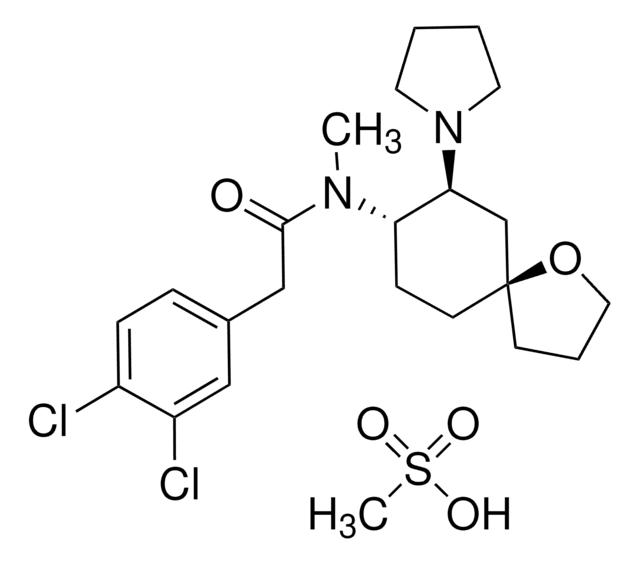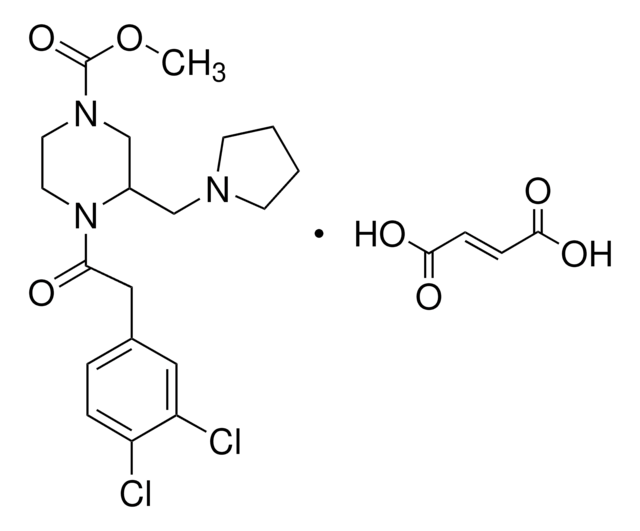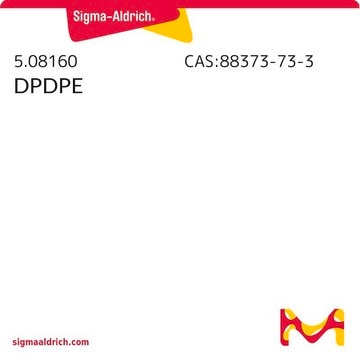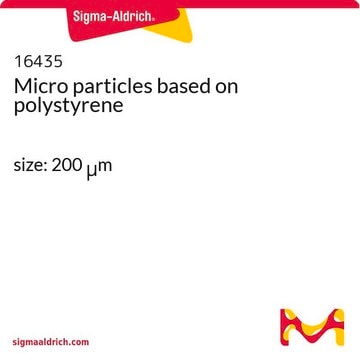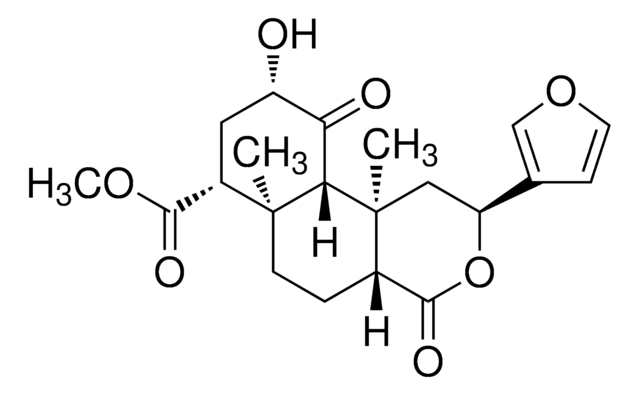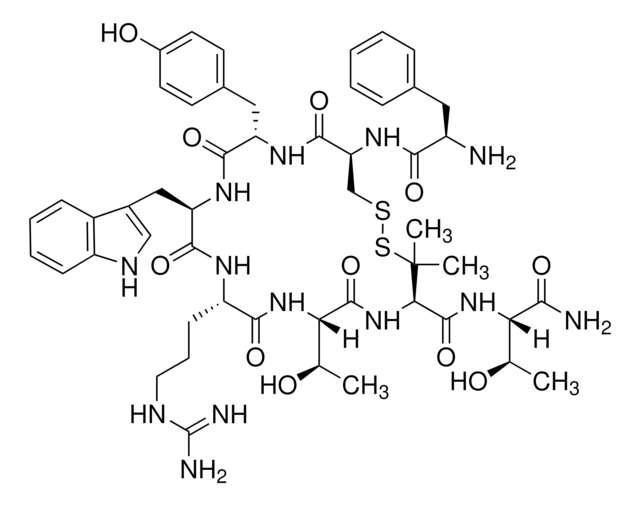U103
U-69593
solid
Sinonimo/i:
(+)-(5α,7α,8β)-N-Methyl-N-[7-(1-pyrrolidinyl)-1-oxaspiro[4.5]dec-8-yl]-benzeneacetamide, U69593
Scegli un formato
Scegli un formato
About This Item
Prodotti consigliati
Stato
solid
Livello qualitativo
Attività ottica
[α]/D +7.8°, c = 0.825 in methanol(lit.)
Colore
white
Solubilità
45% (w/v) aq 2-hydroxypropyl-β-cyclodextrin: 10 mg/mL
0.1 M HCl: >40 mg/mL
ethanol: >40 mg/mL
0.1 M NaOH: insoluble
H2O: insoluble
Temperatura di conservazione
2-8°C
Stringa SMILE
CN([C@H]1CC[C@@]2(CCCO2)C[C@@H]1N3CCCC3)C(=O)Cc4ccccc4
InChI
1S/C22H32N2O2/c1-23(21(25)16-18-8-3-2-4-9-18)19-10-12-22(11-7-15-26-22)17-20(19)24-13-5-6-14-24/h2-4,8-9,19-20H,5-7,10-17H2,1H3/t19-,20-,22-/m0/s1
PGZRDDYTKFZSFR-ONTIZHBOSA-N
Informazioni sul gene
human ... OPRD1(4985) , OPRK1(4986) , OPRM1(4988)
mouse ... Oprk1(18387)
rat ... Oprd1(24613) , Oprk1(29335) , Oprm1(25601)
Cerchi prodotti simili? Visita Guida al confronto tra prodotti
Azioni biochim/fisiol
Caratteristiche e vantaggi
Nota sulla preparazione
Codice della classe di stoccaggio
11 - Combustible Solids
Classe di pericolosità dell'acqua (WGK)
WGK 3
Punto d’infiammabilità (°F)
Not applicable
Punto d’infiammabilità (°C)
Not applicable
Dispositivi di protezione individuale
Eyeshields, Gloves, type N95 (US)
Scegli una delle versioni più recenti:
Certificati d'analisi (COA)
Non trovi la versione di tuo interesse?
Se hai bisogno di una versione specifica, puoi cercare il certificato tramite il numero di lotto.
Possiedi già questo prodotto?
I documenti relativi ai prodotti acquistati recentemente sono disponibili nell’Archivio dei documenti.
I clienti hanno visto anche
Active Filters
Il team dei nostri ricercatori vanta grande esperienza in tutte le aree della ricerca quali Life Science, scienza dei materiali, sintesi chimica, cromatografia, discipline analitiche, ecc..
Contatta l'Assistenza Tecnica.